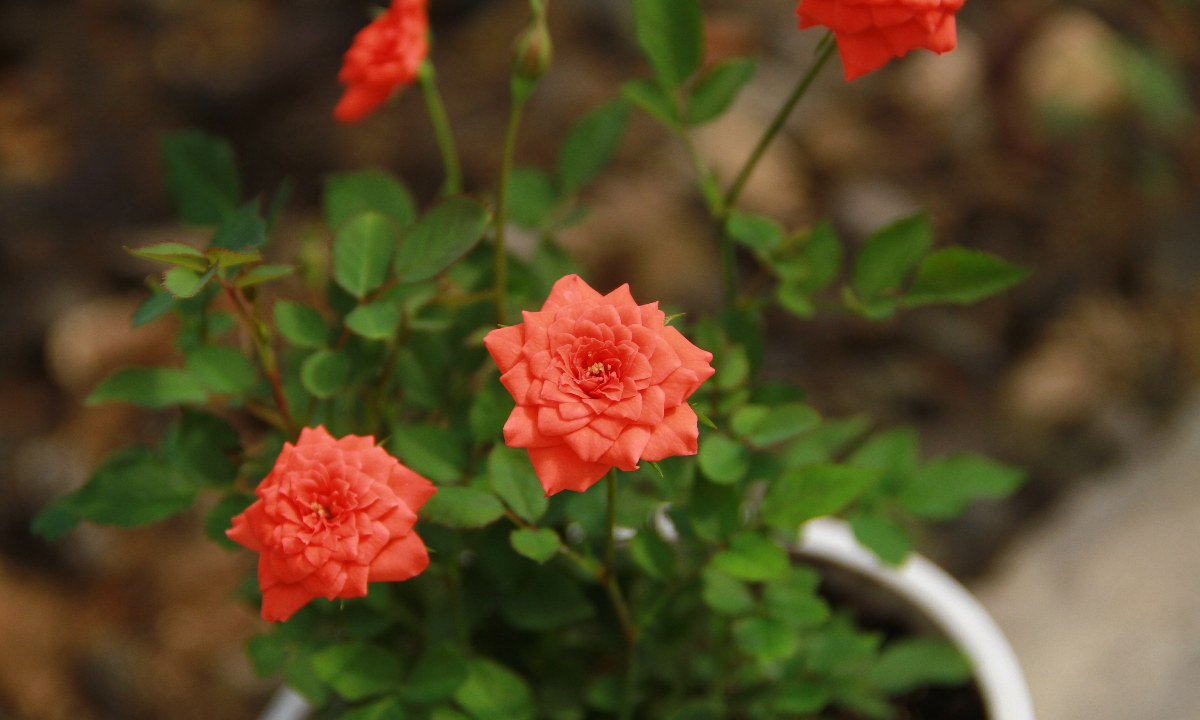
Photo: Courtesy of the Space Breeding Industry Innovation Alliance
With the China Manned Space Agency's announcement on Thursday of an open call for space breeding experimental projects, China's "space greenhouse" is ready to embrace the planting of more new species, as recent years have seen a significant increase in the variety of crops that have toured around space. Many of these crops have already entered ordinary households and are served on dinner tables, and space breeding is playing a greater role in contributing to China's food security.
"Staple crops and vegetable crops are the main species that have been promoted on a large scale on the ground after space breeding. They include rice, wheat, corn, peppers, tomatoes, space lotus and other varieties," Zhao Hui, secretary-general of the Space Breeding Industry Innovation Alliance, told the Global Times.
Many space-bred crops have now been planted on a large scale, Zhao said. For example, the rice seeds carried by the Shenzhou-10 manned mission have produced nearly 10 new varieties of high-quality, high-yielding rice in the past five years.
The average yield of wheat production in China is around 400-600 kilograms per mu (0.67 hectares), Zhao said, while the new variety of wheat seeds bred from the ones carried onboard the Shenzhou-10 spacecraft in 2013 will have an average yield of more than 800 kilograms per mu. The new variety of seeds is expected to be planted over an area of more than 500,000 mu from 2021 to 2023.
What's more, more than 5,000 vegetable variant strains of good quality have been bred onboard the Shenzhou series of manned spacecraft, creating over 20 new varieties of vegetables such as space peppers and space tomatoes.
The vitamin C content in space pepper is 20 percent more than ordinary ones, and they are available for market sale some 15 days earlier. The yield is also significantly improved, bringing considerable economic benefits to farmers.
In addition to staple crops and vegetables, the yield of grass and flowers and Chinese herbal seeds has also increased through space breeding.
Other than boosting yields and quality of seeds, the benefit of China's space breeding is also reflected in its contribution to the nation's food security.
The China space station, completed last year, has now entered the application and development phase. A large number of biological samples have been carried to the in-orbit station, obtaining space mutagenesis under cosmic radiation in the microgravity environment during spaceflight.
A great number of experimental materials have returned to Earth with the Shenzhou spacecraft and have been handed over to researchers for seed selection and ground breeding, the Global Times has learned. Shenzhou-14 and -15 have carried more than 1,000 crop seeds and microbial strains from over 100 institutions, and Shenzhou-12 and -13 also returned more than 1,000 seeds from 88 institutions.
"At present, whether in laboratory testing of microbial strains or experimental planting of crop materials, important mutant strains with scientific research value and application potential have been found, such as rice in South China, forage grass in Southwest China's Sichuan Province, cotton in Central China's Henan Province, and maple, fir, and red beech for forest breeding," Zhao noted.
These valuable strains will lay the foundations for the innovation of China's agricultural and forestry resources and play an important role in the development of the country's food security and ecological civilization, he said.
Space breeding has produced more than 240 varieties of staple crops in China, significantly improving crop yield and quality and increasing grain production by about 1.6 billion kilograms, the Global Times has learned. The varieties, with optimized cultivation techniques, have greatly reduced costs, bringing farmers more income.
For example, the new variety of space rice in South China can be sown directly, which avoids the transplanting process and reduces the burden on farmers.
Space mutagenesis has greatly improved the properties and quality of materials, and further expanded their commercial use.
At present, staple food crops such as rice and wheat, or space peppers, tomatoes and eggplants have all been served on people's tables. With a large number of breeding materials sent into space in recent years, more new varieties with new traits and tastes will enter the market soon in the future, enriching people's lives, Zhao said.
As for safety issues from space-bred crops that aroused public concern, Zhao said the public need not worry at all. He explained that for one thing, the introduction of exogenous or endogenous genes is not involved in the process of space mutagenesis, so it is no different from traditional physical radiation breeding; for another thing, under the protection of the spacecraft, the radiation concentration is much lower than that of traditional radiation mutagenesis, and the offspring of spaceflight breeding will not be radioactive.
"Our taikonauts on the China Space Station and astronauts on the International Space Station have all eaten space lettuce and other kinds of space-bred crops and no safety issues have ever occurred. That suggests that space-bred food is safe," Zhao noted.




